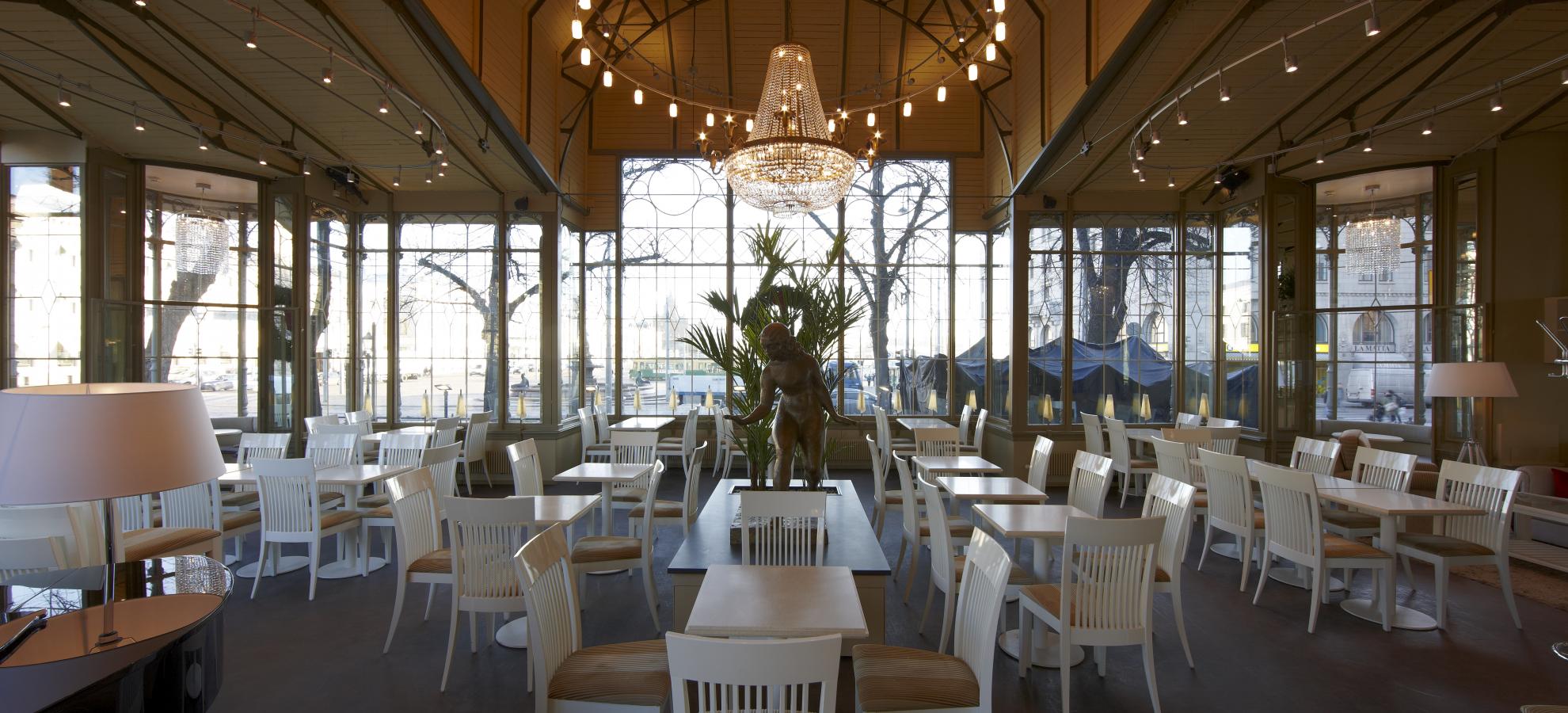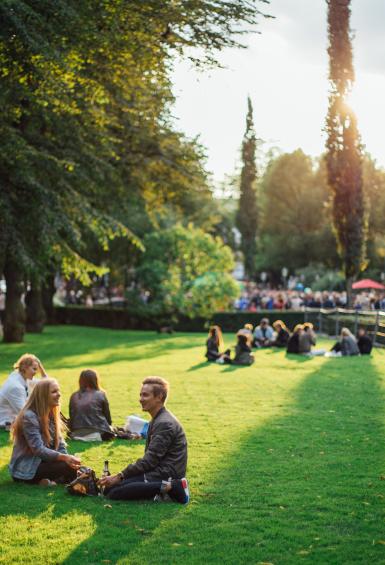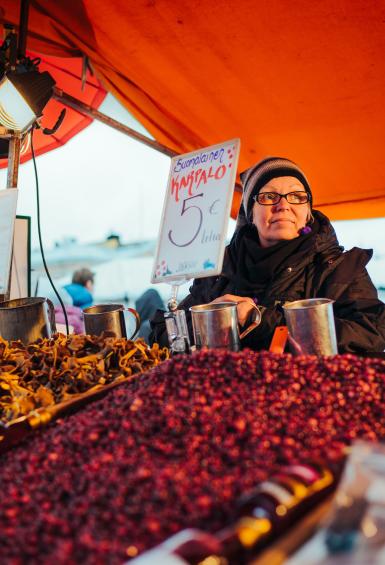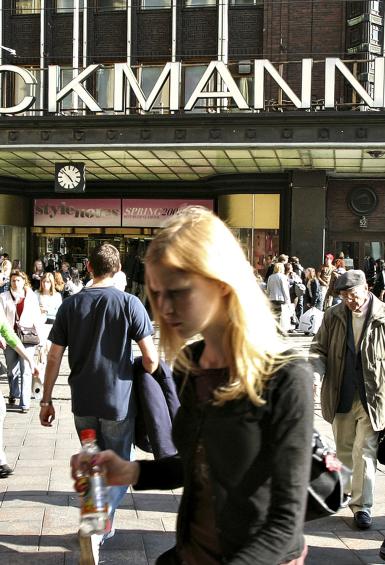
The sculpture “Muse” by Wäinö Aaltonen continues to draw the attention of customers sitting inside the restaurant Kappeli at the market end of the Esplanade Park. At the adjacent table the customers wonder how many muses once sat at Kappeli inspiring the likes of the poet Eino Leino, the artist Akseli Gallen-Kallela and the composer Jean Sibelius. Leino’s muse was the female writer L. Onerva, who challenged conventions in the late 1800s by actually going to Kappeli unaccompanied.
A popular hangout among poets, artists and writers in the late 19th and early 20th centuries, Kappeli got its start in 1840 when the confectioner Johan Daniel Jerngren had a sales booth erected on the site that looked like a chapel. The name stuck when the architect Hampus Dahlström later designed a restaurant at the same location. Kappeli’s fame as a second home for artists was honoured by moving the sculpture “Muse” out of the corner and into the centre of the room and by hanging Albert Edelfelt’s painting of Gambrinus, inventor of beer, for the kitchen staff to admire.
These days Kappeli entertains customers with live music, its artist menus honour Leino, Onerva and Sibelius, and the interior décor is light and timeless. An emancipated local woman can sit in Kappeli by herself whenever she likes and explain the details behind the glass pavilions to the tourists at the adjacent table – they were designed by Bruno F. Granholm and installed in 1891. The building was renovated only after the cooperative Elanto began renting Kappeli in 1976. Today, Kappeli is the place that is open 365 days a year.





